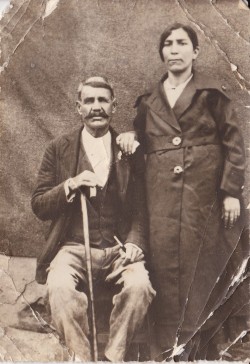Last Word | November 16th, 2016

By Davin Wait davin.wait@hcsmuseum.org
I’m writing to address a common misconception about immigration. Our political and media climate has been more frequently lending itself to arguments and assumptions on the issues that are not grounded in historical facts.Immigrants are not new to our community. Fargo-Moorhead exists on the Red River, where Ojibwe and Dakota people fished for sturgeon or namé, the “king of fish.” French and English fur traders and their descendants, the Métis, followed. Waves of colonial immigrants, Scandinavians, and Germans arrived after them and that process has continued with new Americans to this very day. Our history and traditions are of immigration, diversity, and change.Syrians are not new to our community. The first mosque to be built in the U.S. was constructed in 1929 by Syrian and Lebanese sodbusters outside of Ross, North Dakota. In September one of our local historical societies, the Historical and Cultural Society of Clay County, teamed up with the Moorhead Public Library to host a series of presentations about local immigration history, including Marian Kadrie’s stories of her Syrian parents homesteading in North Dakota.
The day after America entered the First World War, the first young man in Moorhead to volunteer to fight was named Nassib Shaheen. He volunteered to serve his country even though Syria, the country of his birth, was part of the Ottoman Empire and was unofficially at war with the U.S. (a declaration of war was never official, but the networks of treaty alliances produced the same effect).
In May of 1918, Nassib Shaheen was torn to pieces by a German shell in the Battle of Cantigny. The first Moorhead soldier to die in the war, he is buried in an American cemetery in France. As an immigrant soldier, his story is not unique, but it is seldom reported.
Refugees are not new to our community; and many of us actually descend from refugees without knowing it, as that term has been fluid in its relatively short usage. Adam Stein, one of the Red River Valley’s first pioneers, joined a rebel army in the 1848 revolution that fought for a unified democracy in Germany. When the nobles crushed the rebellion, Adam and several thousand others who fought for democracy in Europe moved to America and its promises of freedom. When the Civil War began in his new home, he, like Shaheen decades later, joined the military and fought for the union and freedom of millions of Americans.
Similarly, Moorhead’s first Mexican residents, the Canuto and Andrea Cruz family, came here fleeing the violence of the Mexican Revolution and to work developing the local sugar beet industry. They championed migrant education and led the founding of the area’s first migrant school in 1944. Their family would drive a bus into the fields to pick up the children of migrant workers and bring them to Moorhead’s Saint Joseph Church, where they studied English and religion.
These people are all Americans. This community and this country were and still are built by the contributions of everyone here, from Native Americans to immigrants, including Syrians and refugees. Our history and tradition are a history and tradition of immigration, diversity, and change. These are historical facts.
December 18th 2025
November 18th 2025
September 23rd 2025
June 19th 2025
June 19th 2025
__293px-wide.jpg)
_(1)_(1)_(1)_(1)__293px-wide.jpg)
_(1)__293px-wide.png)

_(1)__293px-wide.jpg)
__293px-wide.jpg)